Table of Contents
Introduction
Imagine a land where Sahrawi culture tourism begins with the sun spilling gold across endless dunes, where the wind hums ancient songs through sparse acacias, and where the Sahrawis—rooted deep in the desert’s heart—stitch their lives into a vibrant tapestry.
This is Morocco’s Sahara, a place often tangled in political whispers yet alive with human ingenuity and quiet hope. These desert wanderers, with eyes like weathered maps, aren’t just surviving the arid expanse—they’re dreaming up ways to thrive through Sahrawi culture tourism. Their story is one of possibility: a chance to cradle the earth gently while inviting the world to witness its beauty. Through their resilience, traditions, and community spirit, a vision emerges—one where Sahrawi culture tourism blends heritage and ecology, lighting the way forward with sustainability and ecotourism.
This isn’t a tale dusted off from old shelves or borrowed from headlines. It’s a fresh glimpse into a region pulsing with life, where Sahrawi culture tourism offers a blueprint for something new. Let’s step into their world.
Ethnic Diversity and Desert Resilience
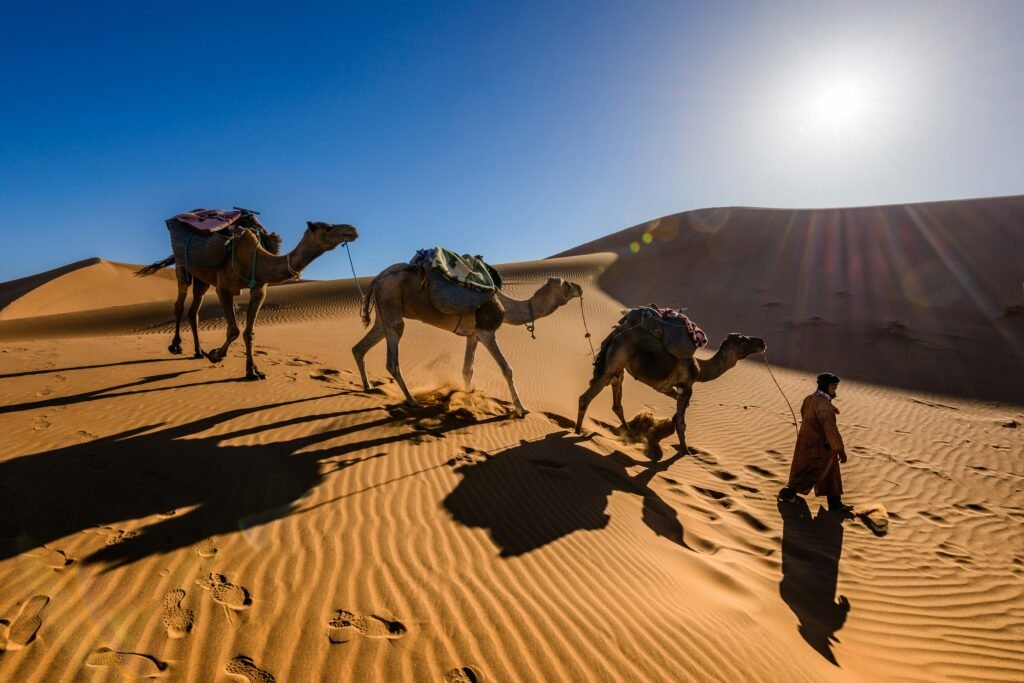
Under the Sahara’s unrelenting sun, a Sahrawi elder adjusts his turban, his fingers tracing patterns his grandfather taught him. He knows where the hidden springs murmur, how to read the stars when the sands shift—a wisdom that fuels Sahrawi culture tourism. The Sahrawis—nomads woven from Berber and Arab threads, spiced with West African roots—have long danced with this desert. They move with camels, their lanky shadows stretching across dunes, sipping life from the land with a thriftiness that feels sacred. A single well sustains a family for weeks; a herd’s milk becomes a lifeline. It’s ingenuity born of necessity, a resilience that simmers and shapes Sahrawi culture tourism.
In villages like Laayoune, Sahrawi hands craft homes from the earth, their walls rising defiantly against the heat. They’ve harnessed the sun with solar panels glinting like mirrors across the sands—a practical step toward a future where Sahrawi culture tourism thrives sustainably. The desert humbles them, sparking cleverness: windbreaks of woven straw, wells dug deep with ancestral know-how. This isn’t mere survival—it’s an alchemy proving the Sahara is a canvas for Sahrawi culture tourism to reshape with grit and grace.
Cultural Heritage as an Ecotourism Draw
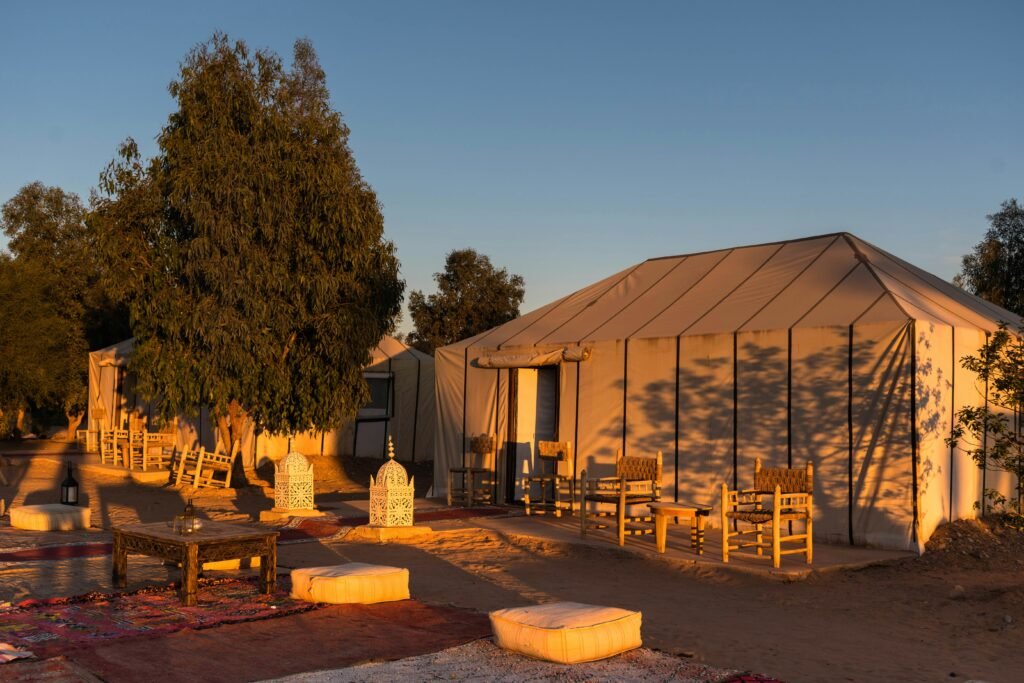
Picture this: a tourist, sunburned and wide-eyed, sips tea poured from a dented Sahrawi kettle, the brew bitter and sweet all at once. Around a campfire, a Tekna tribesman strums a tidinit, its notes curling into the night like smoke—an authentic taste of Sahrawi culture tourism. This isn’t a staged show—it’s a lifeline, a chance for the Sahrawis to share their soul. Their heritage, spun from camel treks and starlit stories, beckons travelers seeking more than selfies. Imagine eco-lodges of mud and straw, low-slung against the dunes, where guests dive into Sahrawi culture tourism by learning to wrap a turban or bake bread in the sand. It’s raw, real, and entirely theirs.
In Dakhla, laughter echoes as Sahrawi youth race across the lagoon, their kites slicing the sky. Elders share tales over tagine, their voices warm as the fire, offering visitors a window into Sahrawi culture tourism. Solar lanterns light the way to glimpse flamingos without a ripple—a blend of past and future. Their culture isn’t a relic; it’s the heartbeat of an ecotourism that could bloom here, a siren call to those craving connection over consumption.
Balancing Development and Ecological Health

The Sahara isn’t a blank slate—it’s a fragile web, and the Sahrawis know it. Phosphate mines scar the earth near Bou Craa, their dust a gritty reminder of outside hands. Drivers like Karim rely on these jobs, his wages feeding three kids, but he wonders, late at night, if the land can bear it forever. The desert’s silence hides a plea: take, but don’t break. And so, whispers of change stir—could those mines fade one day, replaced by wind turbines spinning in the breeze?
Sahrawi herders feel the sands grow greedier, their grazing patches shrinking each year. Yet they’re not helpless. Some, like Fatima, experiment with hardy shrubs to anchor the soil, her hands coaxing green from beige. It’s a small, unglamorous work, but it sings of possibility. What if her tricks spread, lining paths with life? The ingenuity’s there—tentative, unpolished, but alive. Solar farms could hum where mines once roared; eco-villages might rise, light on the land. The tightrope’s real—growth versus grace—but the Sahrawis’ knack for adapting offers hope. It’s not certain, but it’s no mirage.
Community Collaboration for a Sustainable Future
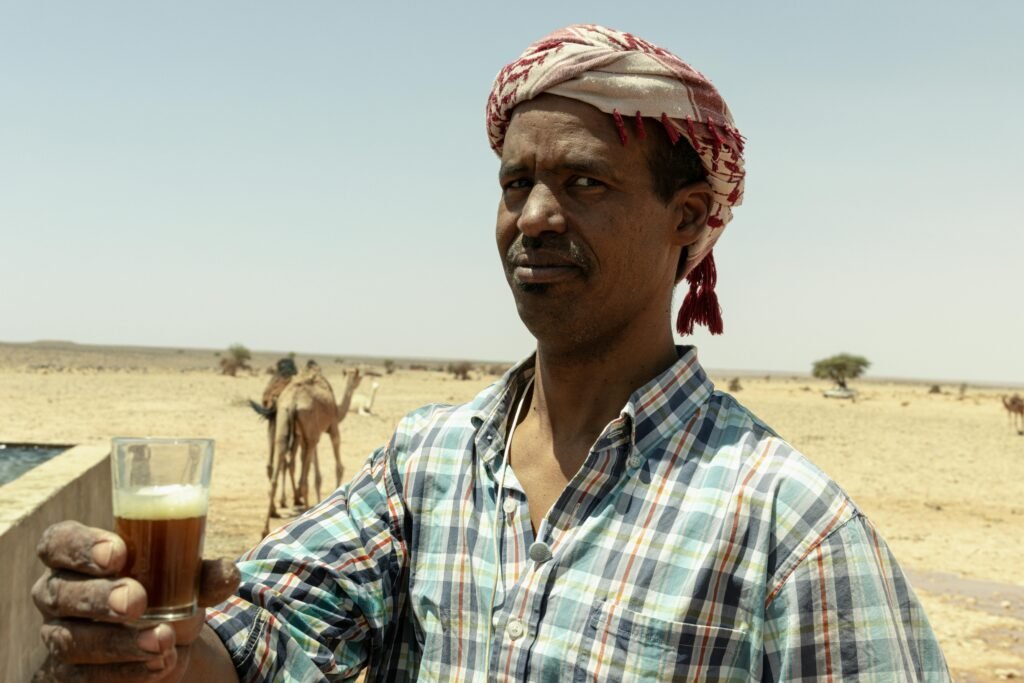
In a dusty Laayoune courtyard, Sahrawi children kick a ball, their giggles weaving a thread of joy through the air. It’s here, in these unglamorous moments, that the future flickers. Picture a cooperative: Sahrawi guides leading treks across dunes, others crafting solar-lit guesthouses from desert clay. The cash flows back to the community, a dream with grit rooted in the spirit that simmers beneath the surface.
Near Smara, Sahrawi women dye rugs, their patterns swirling like the sands, sold online with skills shared among kin. In Dakhla, fishermen cast nets together, their boats bobbing as one, swapping tales of the sea. These aren’t grand schemes—they’re sparks, proof the Sahrawis can meld their strengths. The road’s bumpy—politics cast a shadow of uncertainty—but their ingenuity shines through, a stubborn streak crafting answers from below. A sustainable future here isn’t a gift—it’s a garden they’ll grow, thorn by thorn, bloom by bloom.
A Horizon Worth Chasing
Morocco’s Sahara doesn’t promise easy answers. Its dunes hide tensions, and its winds carry questions. But step closer, and you’ll see it: the Sahrawis, whose ingenuity and spirit refuse to fade. They’re not just enduring the desert; they’re reimagining it. Through their hands, a sustainable, tourism-rich tomorrow takes shape—not flawless, but fiercely human. It’s a story still unfolding, rough-edged and radiant, a testament to what happens when culture and hope dig in deep. The world might just want to watch.

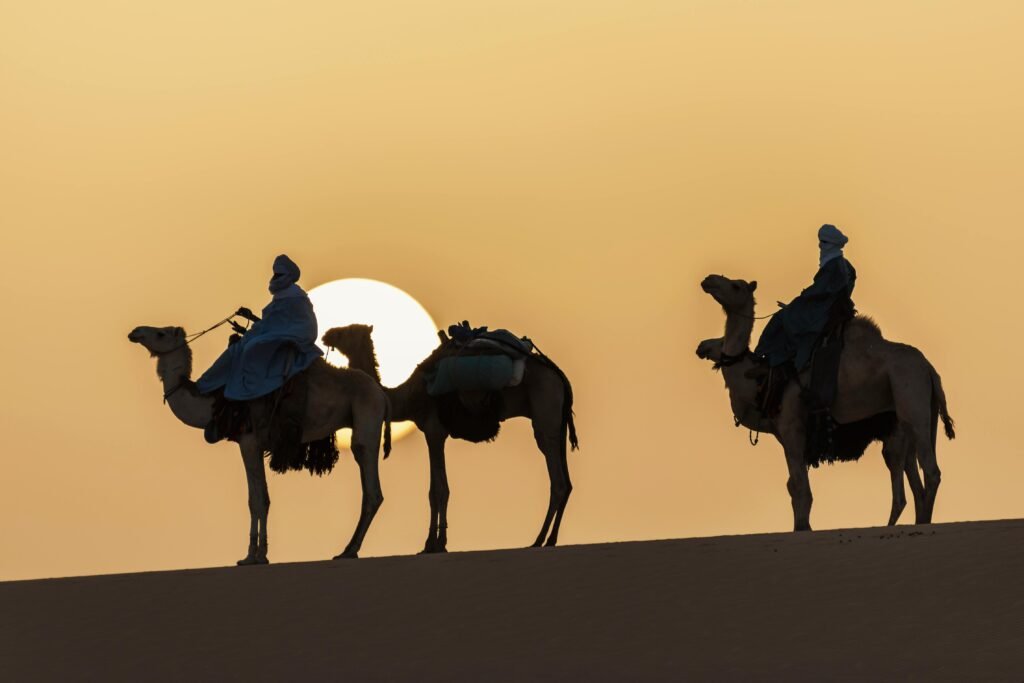
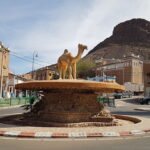

Interesting analysis! Seeing how data impacts roulette-and other games-is key. Platforms like fc178 download are shifting towards that analytical approach, offering more transparency for players. It’s a smart move!
That’s a solid point about bankroll management! Seeing platforms like bigbunny ph game offering easy GCash deposits makes responsible betting even more accessible for Filipino players. Good analysis!